Politics through the Lens of Economics
Lecture 9: Presidential vs. Parliamentary Systems
Masayuki Kudamatsu
29 November, 2017
Discussion Time
What evidence do we need to say
the legislative bargaining model (assumptions / predictions)
explains Japan's immigration policy?
Background information #1
Image source: Figure 1 of Nguyen (2016)
Distribution of 244 million migrants
across countries in 2015
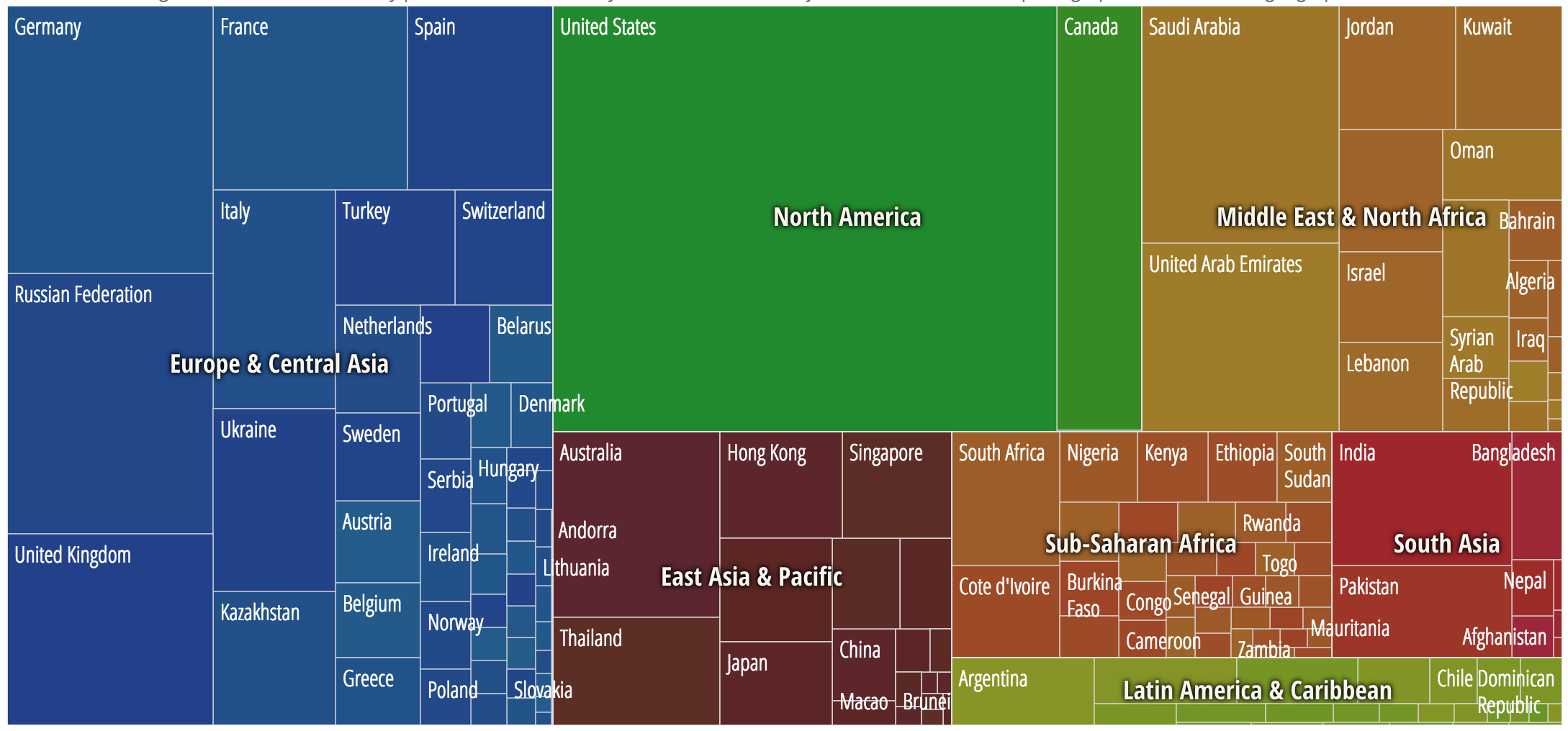
Background information #2
Image source: Figure 2 of Nguyen (2016)
Population share of foreign-born people in 2015
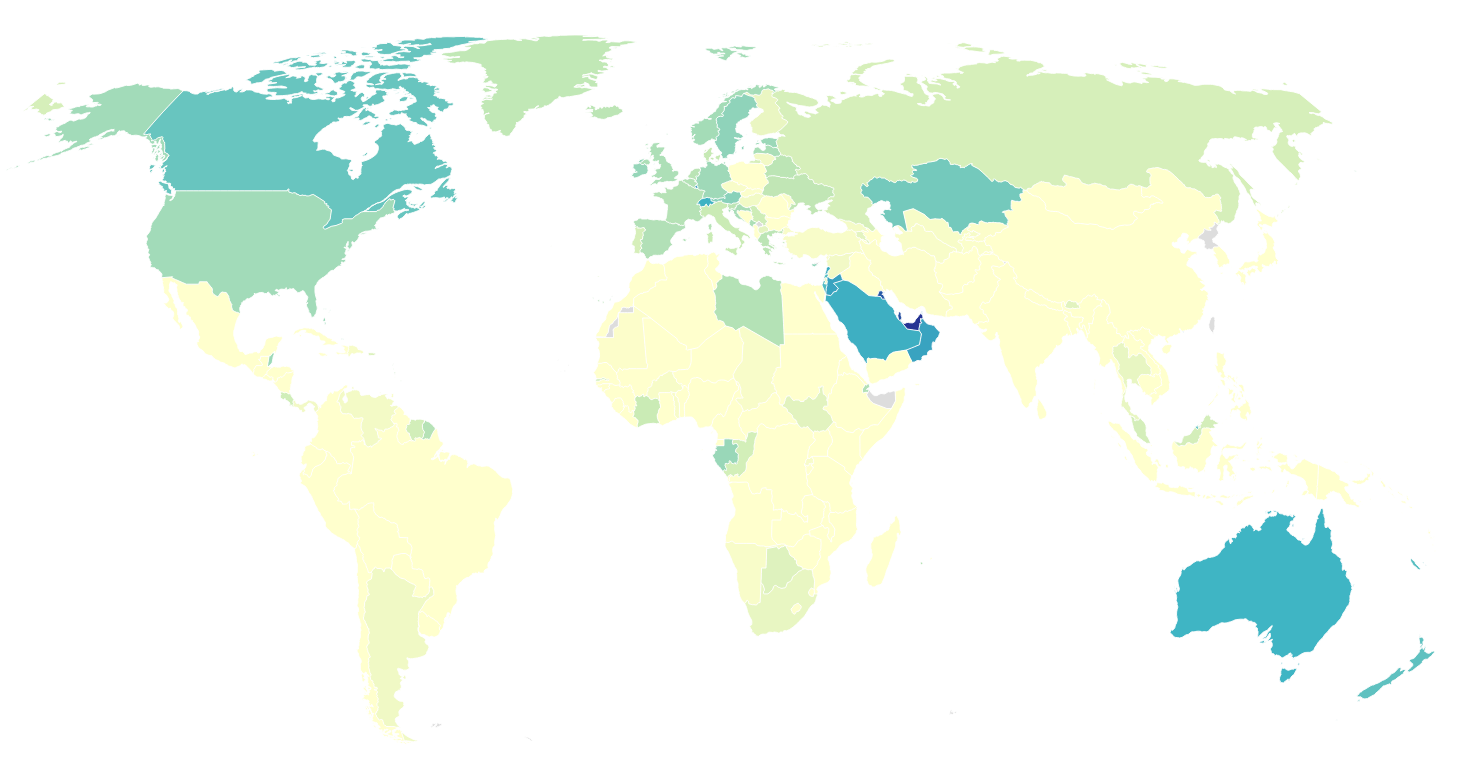
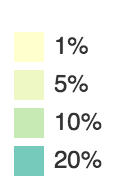
Background information #3
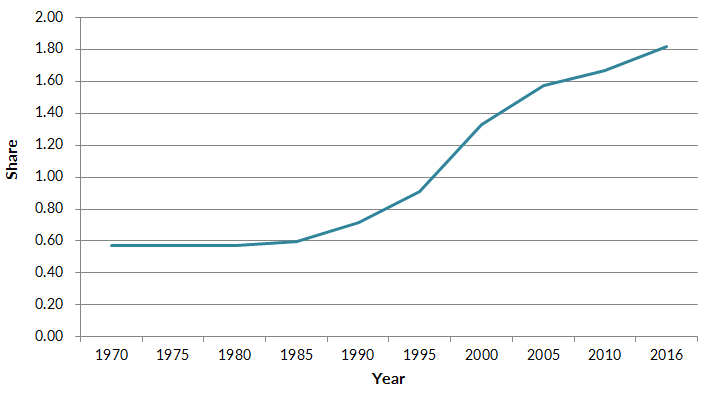
% of foreigners among Japanese population
Image source: Figure 1 of Migration Policy Institute (2017)
Background information #4
History of immigration policy of Japan
1952
Immigration Control and Refugee Act (出入国管理及び難民認定法)
To discourage long-term settlement of foreign workers
1980s
Increase in illegal unskilled migrants for "3K" jobs
1990
Revised Immigration Control and Refugee Act
Allow unskilled migrants if they are of Japanese descent
e.g. Japanese Brazilians, Japanese Peruvians
2012
Launch a new Highly Skilled Foreign Professional (HSFP) visa
Discussion Time
What evidence do we need to say
the legislative bargaining model (assumptions / predictions)
explains Japan's immigration policy?
Aim to come up with a wrong answer

Motivation: Forms of Government
Parliamentary system
Presidential system
Two major forms of democracy
Major difference: how the chief executive is elected
But the legislative policy-making process differs, too
Presidential system
Different congressional committees hold proposal power over different policy issues
Separation of Power
=
Taxation
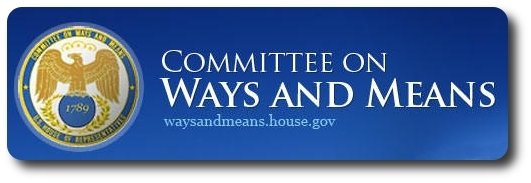

Spending
Parliamentary system
Ruling party legislators propose almost all bills
A disagreement within ruling party members leads to a government crisis: vote of no confidence (内閣不信任決議)
June 1993: Vote of no confidence against Prime Minister Miyazawa was approved after the ruling LDP members couldn't agree on electoral reform
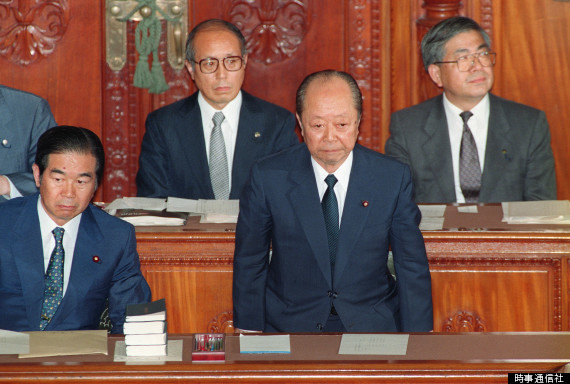
Legislative cohesion
=

Today's Road Map
Model of Presidential vs. Parliamentary Systems
Fiscal Policies in Presidential System
Fiscal Policies in Parliamentary System
Evidence on Model Predictions
Region 1
Region 2
Region 3
Legislator 1
Legislator 2
Legislator 3
A country of 3 regions, each represented by one legislator
Model ingredient #1: Legislators
Amount of tax to be collected
(tax burden is equally shared by 3 regions)
Model ingredient #2: Policies
Amount of
public goods
to be provided
Transfer
to
Region 1
Transfer
to
Region 2
Transfer
to
Region 3
No budget deficit allowed (for simplicity)
Model ingredient #3: Default policies
If tax proposal is rejected, no tax is collected
(i.e. government shutdown)
If spending proposal is rejected,
No public good or transfer to any region is provided
The approved tax proposal is annulled.
Model ingredient #4: Legislators' objective
Assume each legislator perfectly represents their region's citizens
(as in the citizen-candidate model)
Each legislator prefers:
Less tax
More public goods
More transfer to their own region
Doesn't care about:
Transfer to other regions
Extra benefit/loss from each policy
Extra benefit from public goods declines (cf. Lecture 3)
Public goods
Extra benefit from public goods
But extra benefit from transfer does not decline
Transfer
Extra benefit from transfer
Transfer can be used for anything (while public goods are specified)
Extra benefit/loss from each policy (cont.)
Similarly, extra loss from paying tax does not change, either
Tax
Tax money could have been used for anything
Extra cost from being taxed
Extra benefit/loss from each policy (cont.)
Finally, extra benefit from transfer = extra loss from tax
If tax money comes back to your region, you're indifferent
Extra cost from being taxed
Extra benefit from transfer
Transfer
Tax
Extra benefit/loss from each policy (cont.)
Presidential system: separation of power
Legislator 1 proposes tax
Legislator 2 proposes spending allocation
Parliamentary system: no separation of power
Legislators 1 & 2 (ruling party members)
jointly propose tax and spending allocation
Model ingredient #5: Agenda setters
Presidential system: no legislative cohesion
Each bill requires a (potentially different) majority to pass
e.g. 1 & 2 approve tax and 2 & 3 approve spending
Parliamentary system: legislative cohesion
Ruling party legislators can veto each other
i.e. 1 & 2 need to approve both tax and spending
Model ingredient #6: Winning coalition
Timing of Events in Presidential System
1
2
3
4
Legislator 1 proposes tax
Legislators vote on the tax proposal
Legislator 2 proposes spending allocation
Legislators vote on the spending proposal
If rejected, the default tax rate is implemented
If rejected, the default allocation is implemented
Timing of Events in Parliamentary Systems
Legislators 1 & 2 negotiate tax & spending
If the agreement is reached,
The policies are proposed to the legislature
and approved by majority voting
If either disagrees,
The vote of no confidence is approved
and the government collapses.
The default policy is implemented
1
2a
2b
(The ruling party forms a majority in parliament)
Legislative cohesion in Parliamentary Systems
Why won't legislator 1 try to make legislator 3 as a coalition partner if legislator 2 disagrees to 1's proposal?
Remember the agenda setter chooses as coalition partners
legislators with a worse default outcome (Lecture 8)
Also remember the agenda-setter gets a lot (Lecture 8)
Legislative cohesion in Parliamentary Systems
Why won't legislator 1 try to make legislator 3 as a coalition partner if legislator 2 disagrees to 1's proposal?
If the government collapses
Opposition (3) has a chance to become the agenda-setter
Ruling party (2) has a chance to lose the agenda setting power
Default outcome is worse for legislator 2
Legislator 1 chooses 2 as a coalition partner

Today's Road Map
Model of Presidential vs. Parliamentary Systems
Fiscal Policies in Presidential System
Fiscal Policies in Parliamentary System
Evidence on Model Predictions
Backward induction #1
1
2
Legislator 1 proposes tax
Legislators vote on the tax proposal
If rejected, the default tax rate is implemented
3
4
Legislator 2 proposes spending allocation
Legislators vote on the spending proposal
If rejected, the default allocation is implemented
Optimal voting on spending for legislators 1 & 3
Vote yes as long as the proposal is better than the default policy
Backward induction #2
1
2
Legislator 1 proposes tax
Legislators vote on the tax proposal
If rejected, the default tax rate is implemented
3
4
Legislator 2 proposes spending allocation
Legislators vote on the spending proposal
If rejected, the default allocation is implemented
Transfer to non-proposers' regions
Both legislators 1 & 3 will accept the offer better than the default
Legislator 2 has no reason to offer more than zero
Legislator 2's optimal proposal on
Public good vs transfer to proposer's region
Legislator 2's optimal proposal on
Public good vs transfer to proposer's region
Legislator 2 maximizes his region's benefit
Transfer
Tax revenue
Extra benefit from transfer
Extra benefit from public goods
Legislator 2's optimal proposal on
Public goods
Public good vs transfer to proposer's region
Legislator 2 maximizes his region's benefit
Transfer
Tax revenue
Extra benefit from transfer
Extra benefit from public goods
Legislator 2's optimal proposal on
Public goods
Optimal allocation
Backward induction #3
1
2
Legislator 1 proposes tax
Legislators vote on the tax proposal
If rejected, the default tax rate is implemented
3
4
Legislator 2 proposes spending allocation
Legislators vote on the spending proposal
If rejected, the default allocation is implemented
Optimal voting on tax for legislators 2 & 3
If voting no,
No public good is provided
If voting yes to a proposal to collect non-zero taxes,
Legislator 2 will propose a non-zero amount of public good.
Public goods / Tax
Extra benefit from public goods
Optimal voting on tax for legislators 2 & 3 (cont.)
Extra cost from being taxed
Public goods / Tax
Extra benefit from public goods
Optimal voting on tax for legislators 2 & 3 (cont.)
Extra cost from being taxed
You gain by this much
compared to no tax collection at all
Optimal voting on tax for legislators 2 & 3
If voting no,
No public good is provided
If voting yes to a proposal to collect non-zero taxes,
Legislator 2 will propose a non-zero amount of public good.
Both legislators vote yes to a proposal of non-zero tax
Backward induction #4
1
2
Legislator 1 proposes tax
Legislators vote on the tax proposal
If rejected, the default tax rate is implemented
3
4
Legislator 2 proposes spending allocation
Legislators vote on the spending proposal
If rejected, the default allocation is implemented
Tax revenue
Legislator 1 expects legislator 2 will
Legislator 1's optimal proposal on
(1) Transfer zero to region 1
(2) Provide public goods first if tax revenue is small
Transfer
Public goods
Tax
revenue
Extra benefit from transfer
Extra benefit from public goods
If tax revenue is small...
Public goods
Tax
revenue
Extra benefit from transfer
Extra benefit from public goods
Optimal allocation
Legislator 1 will spend all tax revenue on public goods
Tax revenue
Legislator 1 expects legislator 2 will
Legislator 1's optimal proposal on
(1) Transfer zero to region 1
(2) Provide public goods first if tax revenue is small
(3) Transfer any extra tax to region 2
once public goods are provided enough
Public goods
Tax
revenue
Extra benefit from transfer
Extra benefit from public goods
Optimal allocation
Once tax revenue is large enough for legislator 2 to spend transfer...
Transfer to region 2
Tax revenue
Extra benefit from transfer
Extra benefit from public goods
Any extra tax revenue will be spent on transfer to region 2
Optimal allocation
Public goods
Tax revenue
Legislator 1 expects legislator 2 will
Legislator 1's optimal proposal on
(1) Transfer zero to region 1
(2) Provide public goods first if tax revenue is small
(3) Transfer any extra tax to region 2
once public goods are provided enough
Public goods
or Tax
Extra benefit from public goods
Extra cost from being taxed
Legislator 1 benefits from public goods
as long as not paying taxes too much
Extra benefit from public goods
Extra cost from being taxed
Optimal level of public goods
Legislator 1 benefits from public goods
as long as not paying taxes too much
Transfer to region 2
Tax revenue
Extra benefit from transfer
Extra benefit from public goods
Which coincides with public good level chosen by legislator 2
Optimal allocation
Public goods
because extra benefit from transfer = extra cost of taxes
Transfer
Public goods
Optimal tax revenue
Extra benefit from transfer
Extra benefit from public goods
Therefore, legislator 1 proposes to collect tax just enough to finance optimal level of public goods
Then legislator 2 will spend all tax revenue on public goods
Policies chosen by the presidential system
Public goods
Tax revenue
& No transfer to any region
i.e. A small government as in U.S.

Today's Road Map
Model of Presidential vs. Parliamentary Systems
Fiscal Policies in Presidential System
Fiscal Policies in Parliamentary System
Evidence on Model Predictions
Timing of Events in Parliamentary Systems (recap)
Legislators 1 & 2 negotiate tax & spending
If the agreement is reached,
The policies are proposed to the legislature
and approved by majority voting
If either disagrees,
The vote of no confidence is approved
and the government collapses.
The default policy is implemented
1
2a
2b
(The ruling party forms a majority in parliament)
Timing of Events in Parliamentary Systems (recap)
Legislators 1 & 2 negotiate tax & spending
If the agreement is reached,
The policies are proposed to the legislature
and approved by majority voting
If either disagrees,
The vote of no confidence is approved
and the government collapses.
The default policy is implemented
1
2a
2b
(The ruling party forms a majority in parliament)
Transfer to legislator 3's region
No support is needed from legislator 3 to pass the bill
Transfer to region 3 = Zero
Legislators 1 & 2's optimal
Public goods & Transfer to ruling party's regions
Legislators 1 & 2 jointly maximize their benefits
The allocation of the maximized joint benefit
depends on their bargaining power
We're interested in the size of government
So we assume legislators 1 & 2 split the joint benefit in half
Legislators 1 & 2's optimal
Public goods
Extra benefit from public goods
Legislators 1 & 2 jointly maximize their benefits
Extra benefit from public goods doubles
Transfer to 1 & 2
Extra benefit from transfer
Legislators 1 & 2 jointly maximize their benefits
Extra benefit from the sum of transfer
does not change
Public goods
Tax revenue
Extra benefit from transfer
Extra benefit from public goods
Optimal allocation
Transfer to 1 & 2
Public goods & Transfer to regions 1 & 2
Legislators 1 & 2's optimal
Tax revenue
Legislators 1 & 2 jointly maximize their benefits
Every additional tax revenue (from all regions including 3)
will be used as transfer to regions 1 & 2
Collect tax as much as possible
Legislators 1 & 2's optimal
Public goods
Tax revenue
Optimal allocation
Transfer to regions 1 & 2
Extra joint benefit from public goods
Extra joint benefit from transfer
Summary 1: Public goods
Under-provided in presidential system
Public goods
Presidential
system
Extra benefit from public goods
Parliamentary
system
Public goods
Summary 1: Public goods
Under-provided in presidential system
Extra joint benefit from public goods
Summary 2: Transfer
Opposition region exploited
Presidential system
Equal allocation (zero to all)
Parliamentary system
Summary 3: Tax revenue (= Total spending)
Public goods
Tax revenue
Presidential
system
Tax revenue
Transfer to regions 1 & 2
Public goods
Parliamentary
system
Summary 3: Tax revenue (= Total spending)
Extra joint benefit from public goods
Extra joint benefit from transfer

Today's Road Map
Model of Presidential vs. Parliamentary Systems
Fiscal Policies in Presidential System
Fiscal Policies in Parliamentary System
Evidence on Model Predictions
Forms of government across the world in 1998
Source: Figure 4.1 of Persson and Tabellini (2003)
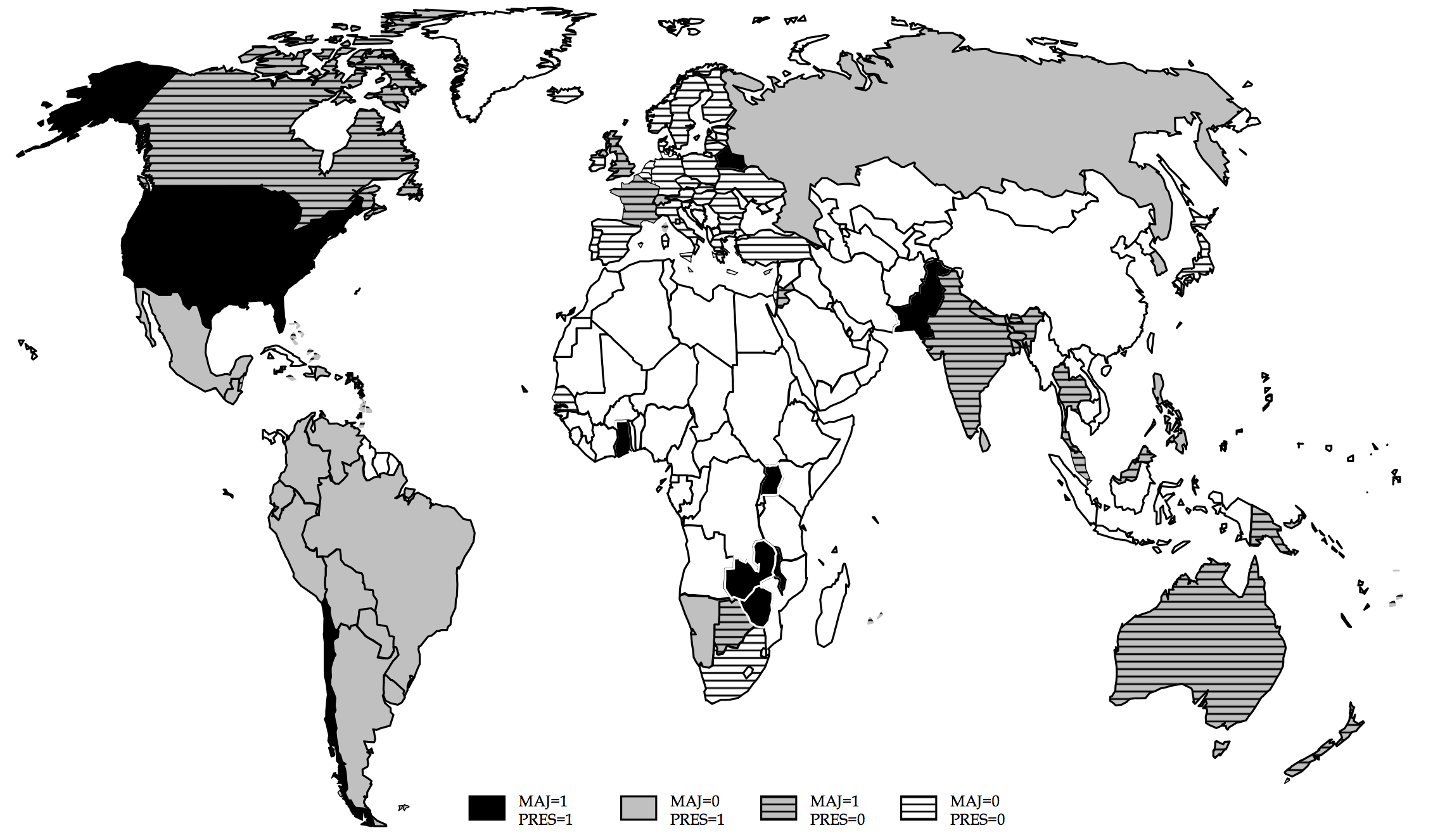
Presidential
Parliamentary
Not democratic
Caveat: same as for electoral rules (lecture 7)
Central govt spending as % of GDP
22.2%
33.3%
vs.
Presidential
Parliamentary
Source: Tables 1-2 of Persson and Tabellini (2004)
The difference is not driven by:
Electoral rules
Income per capita
Trade openness
Total population
% of population aged 16-54 / 65+
Years since democratization
Degree of democracy
Federal system
OECD member countries
Continents
Former colonizers
Social service and welfare spending as % of GDP
4.8%
9.9%
vs.
Presidential
Parliamentary
Source: Tables 1 and 4 of Persson and Tabellini (2004)
The difference is not driven by:
Electoral rules
Income per capita
Trade openness
Total population
% of population aged 16-54 / 65+
Years since democratization
Degree of democracy
Federal system
OECD member countries
Continents
Former colonizers
Next lecture
Model of politics #5
Political Agency Model
Task of running the country is delegated
Citizens reward well-behaving politicians with re-election
Politicians are the agent of citizens
Conflict of interests between citizens and politicians (e.g. corruption)
This lecture is based on the following academic articles and books:
Persson, Torsten, Gérard Roland, and Guido Tabellini. 2000. “Comparative Politics and Public Finance.” Journal of Political Economy 108(6): 1121–61.
See also Chapter 10 of Persson, Torsten, and Guido Tabellini. 2000. Political Economics: Explaining Economic Policy. Cambridge, Massachusetts: MIT Press.
Persson, Torsten, and Guido Tabellini. 2004. “Constitutional Rules and Fiscal Policy Outcomes.” American Economic Review 94(1): 25–45.
See also chapters 4 & 6 of Persson, Torsten, and Guido Enrico Tabellini. 2003. The Economic Effects of Constitutions. MIT Press.
Politics through the Lens of Economics (2017): Lecture 9 Presidential vs. Parliamentary Systems
By Masayuki Kudamatsu
Politics through the Lens of Economics (2017): Lecture 9 Presidential vs. Parliamentary Systems
- 1,484



